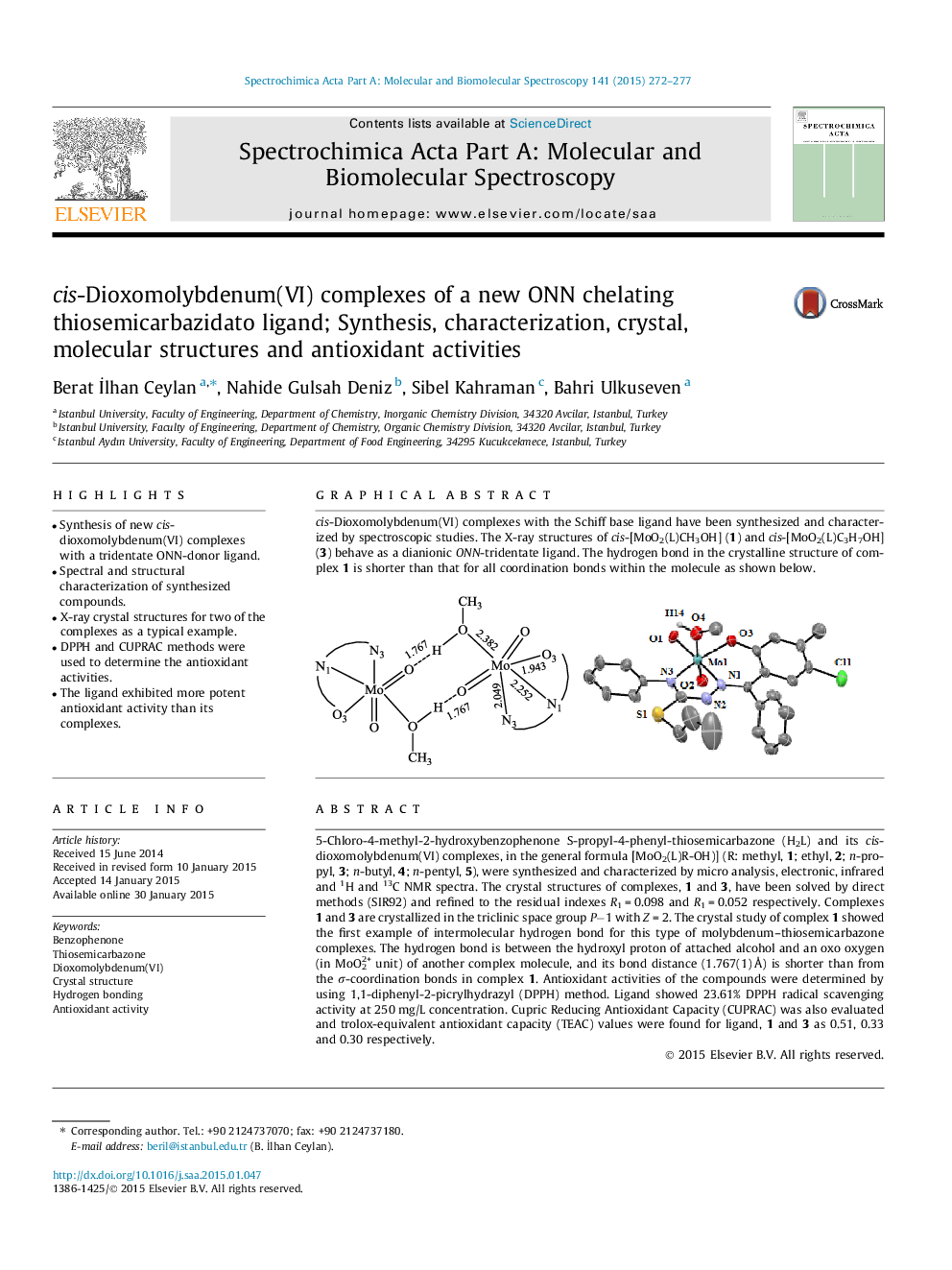| Article ID | Journal | Published Year | Pages | File Type |
|---|---|---|---|---|
| 1232414 | Spectrochimica Acta Part A: Molecular and Biomolecular Spectroscopy | 2015 | 6 Pages |
•Synthesis of new cis-dioxomolybdenum(VI) complexes with a tridentate ONN-donor ligand.•Spectral and structural characterization of synthesized compounds.•X-ray crystal structures for two of the complexes as a typical example.•DPPH and CUPRAC methods were used to determine the antioxidant activities.•The ligand exhibited more potent antioxidant activity than its complexes.
5-Chloro-4-methyl-2-hydroxybenzophenone S-propyl-4-phenyl-thiosemicarbazone (H2L) and its cis-dioxomolybdenum(VI) complexes, in the general formula [MoO2(L)R-OH)] (R: methyl, 1; ethyl, 2; n-propyl, 3; n-butyl, 4; n-pentyl, 5), were synthesized and characterized by micro analysis, electronic, infrared and 1H and 13C NMR spectra. The crystal structures of complexes, 1 and 3, have been solved by direct methods (SIR92) and refined to the residual indexes R1 = 0.098 and R1 = 0.052 respectively. Complexes 1 and 3 are crystallized in the triclinic space group P−1 with Z = 2. The crystal study of complex 1 showed the first example of intermolecular hydrogen bond for this type of molybdenum–thiosemicarbazone complexes. The hydrogen bond is between the hydroxyl proton of attached alcohol and an oxo oxygen (in MoO22+ unit) of another complex molecule, and its bond distance (1.767(1) Å) is shorter than from the σ-coordination bonds in complex 1. Antioxidant activities of the compounds were determined by using 1,1-diphenyl-2-picrylhydrazyl (DPPH) method. Ligand showed 23.61% DPPH radical scavenging activity at 250 mg/L concentration. Cupric Reducing Antioxidant Capacity (CUPRAC) was also evaluated and trolox-equivalent antioxidant capacity (TEAC) values were found for ligand, 1 and 3 as 0.51, 0.33 and 0.30 respectively.
Graphical abstractcis-Dioxomolybdenum(VI) complexes with the Schiff base ligand have been synthesized and characterized by spectroscopic studies. The X-ray structures of cis-[MoO2(L)CH3OH] (1) and cis-[MoO2(L)C3H7OH] (3) behave as a dianionic ONN-tridentate ligand. The hydrogen bond in the crystalline structure of complex 1 is shorter than that for all coordination bonds within the molecule as shown below.Figure optionsDownload full-size imageDownload as PowerPoint slide
